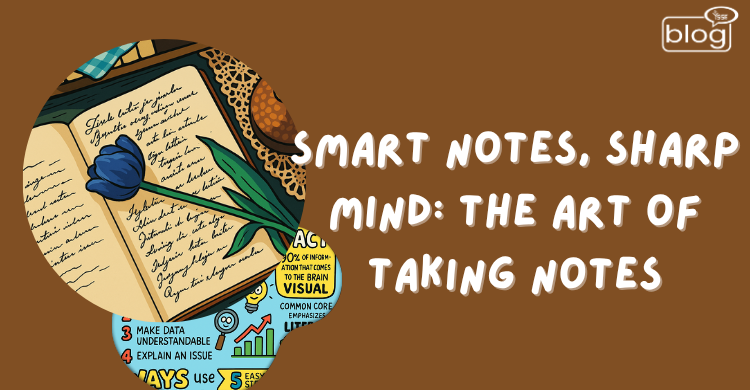A Chinese proverb says, “The palest ink is better than the best memory.” I remember my teacher scolding me by saying that a blank notebook means a blank head. From Leonardo da Vinci’s notebooks to Vladimir Nabokov’s index cards, pen and papers have been companions from ancient civilization.
Why is note-taking a necessity?
Look at history; think how we would have come this far without noting down knowledge, ideas, religious texts, civilization, and research. Isn’t it somehow true that most of the credit goes to the papers that hold the whole world’s past in their ink?
In a note, you can be messy and creative all at once. Notes hold on to your memory, which for sure will fade away with time from your brain.
Benefits?
- To organize your messy thoughts.
- Taking notes can increase your memory and speed up learning
- Writing down tasks increases the sense of accountability
- Your notebook can work as a second brain, more like a storage.
- Brainstorming and writing down the problems can evoke the solution itself.
- Notes and annotations enhance the visibility power of the brain as well
Popular note-taking techniques
Productivity expert Tiago Forte once said, “Notes are the breadcrumbs of thought- follow them back to your best ideas.” However, I believe the art of note-taking lies within each individual’s unique way of seeing things and writing them down. Here are some popular techniques-
Cornell method: This method was developed by Walter Pauk and is extensively used in research fields.
Process-
- Create three sections on your page: 70% on the right side for notes, 30% on the left side for cues, and at the bottom for summary writing.
- On the right side, write short sentences or bullet points. On the left, questions, key terms, and confusions. Lastly, summarize in 2-3 sentences what the note is about.
Mind Mapping: If you want to brainstorm to solve a problem, then mind mapping is a powerful visual technique.
How exactly does it work?
- Write the main concept at the center of a page. Then, go for branches using the main categories of the topic. Then, sub-branches for details and other subcategories.
- It will eventually look like a radial diagram, more like a tree with branches
Zettelkasten method: Niklas Luhmann’s slip box is a thinking and note-taking tool to store and reconnect with your thoughts. There are 3 types of notes in this method. Feeting notes for temporary ideas like a reminder, literature notes to summarize your knowledge, and permanent notes like a statement which has no confusion anymore and has clear thoughts. You can link different notes by giving a unique ID to each or tags, or references.
Some other techniques are-
- Outline method
- Charting method Notes are the breadcrumbs of thought- follow them back to your best ideas.
- Sentence method ‘
- Boxing method
- Flow notes
- Visual method
Note-taking tools
If you are a stationery lover like me, then you will need lots of tools. A minimalist will only need a notebook, pen, and an app to organize everything digitally. Some pieces of equipment you might need:
Paper tools
- Notebooks
- Pens and highlighters
- Sticky notes and index cards
Digital apps
- Notion, Evernote, or OneNote to keep everything in one place
- Google Keep, Dropbox Paper, or Apple Notes as a backup
How to embrace the art of note-taking?
You can effectively apply some tricks to your note-taking method to increase the benefits.
Choose your method: Stay in your comfort zone; we advise otherwise in other scenarios. Remember, you are writing for yourself. For example, I prefer annotations on books and short main points written down. Find yours. Without any judgment of mixed language or abbreviations, just write down for your personal use.
First, hear or read, then write: Research shows that an average speaker uses 125-140 words per minute, whereas an average note taker writes approximately 25 words per minute. The summary is that you cannot listen and write exactly everything. Listen attentively and note down the main theme using a method you prefer.
Always revise and rewrite if necessary: It’s best to revise the note that day. The more you procrastinate, the more you forget. While revising, add information in detail, and if possible, rewrite the note. When you later go back to your writing, your thoughts and perspective might change, and a different solution might emerge.
Be as artistic and creative as possible: Visuals, colors, and designs have the power to encourage note-taking habits. Use your creativity to turn a daily note into a keepsake.
Journaling, storywriting, or whatever it is, smart notes can be your best companion in productivity. Align your mind and notes well to have the best outcome. Margaret Atwood said, “A word after a word after a word is power.” Then, why not take advantage of this power?
To read more blogs like this, click here.
Writer,
Jannatul Yasmin
Intern, Content Writing Department
YSSE

